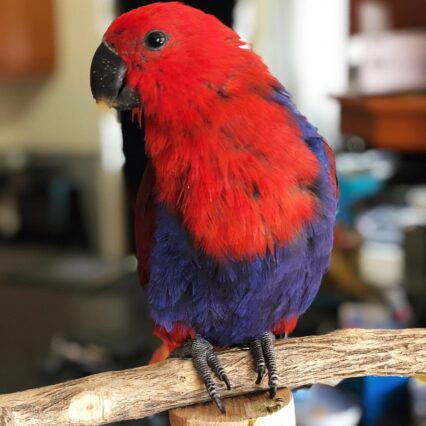- May 26, 2024
Hispaniolan Amazon Parrot: 10 Surprising Facts You Didn’t Know!

Welcome, bird enthusiasts! If you’re captivated by the vibrant world of parrots, large birds with colorful feathers, beaks, and wings, then you’re in for a treat. In this comprehensive guide, we’ll delve into the fascinating realm of the Hispaniolan Amazon Parrot, large birds with an interesting fact about their personality. From its captivating appearance to its unique behaviors, we’ve got you covered with interesting facts and hospital.
In this listicle, we’ll explore the mesmerizing colors that adorn their feathers, their remarkable ability to mimic sounds and speech, their interesting fact of being able to mimic sounds and speech, and their natural habitat on the beautiful island of Hispaniola. We’ll also provide insights into their diet requirements and tips for creating an enriching environment for these intelligent creatures.
Whether you’re a seasoned parrot owner or simply intrigued by these magnificent birds, scroll down for reviews of our top picks and discover everything you need to know about the captivating world of Hispaniolan Amazon Parrots, including an interesting fact.
Browse our shop for beautiful birds. Find your perfect parrot companion today
-
Sale Product on sale
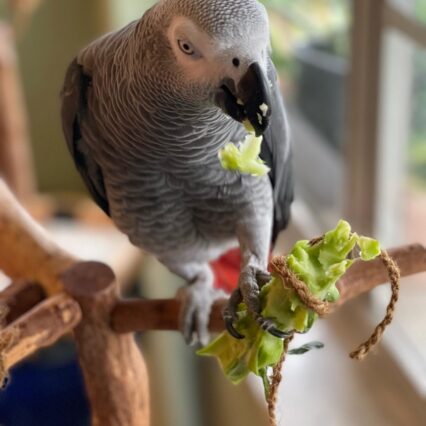 My Name is APOLLO, Male Talking Timneh African Grey. 20% Off Today – Don’t Miss Out!
My Name is APOLLO, Male Talking Timneh African Grey. 20% Off Today – Don’t Miss Out!$1,600.00Original price was: $1,600.00.$1,400.00Current price is: $1,400.00. -
Sale Product on sale
 Buy SYLVANAS, Male Electus. 20% Off Today – Don’t Miss Out! Limited Time:
Buy SYLVANAS, Male Electus. 20% Off Today – Don’t Miss Out! Limited Time:$1,100.00Original price was: $1,100.00.$900.00Current price is: $900.00.
Key Takeaways
- The Hispaniolan Amazon parrot is the only parrot species native to the Dominican Republic.
- These parrots have green feathers with distinctive red foreheads, making them easily recognizable.
- They nest in tree cavities and are known for their playful and social behavior.
- Hispaniolan Amazon parrots have the ability to mimic human speech.
- They form lifelong bonds with their mates and are known for their monogamous behavior.
- Due to habitat loss, the Hispaniolan Amazon parrot is an endangered species.
- These parrots are protected under CITES Appendix I, which prohibits their international trade.
- Hispaniolan Amazon parrots play a crucial role as seed dispersers in forests.
- Conservation efforts, such as captive breeding programs, are being implemented to protect and restore the population of Hispaniolan Amazon parrots.
Only parrot native to the Dominican Republic
The Hispaniolan Amazon Parrot is the only parrot species that is native to the Dominican Republic. This makes it a truly unique and special bird, representing the country’s rich biodiversity.
The presence of the Hispaniolan Amazon Parrot is not only significant for its beauty and charm, but also for its important role in the ecosystem of the Dominican Republic. As an endemic species, it has adapted to its specific environment over time, making it an integral part of the natural balance of the region.
With a size ranging from 28 to 33 centimeters, this parrot species is known for its vibrant green feathers and striking red forehead. It has a lifespan of around 30 years in the wild, making it a long-lived bird that contributes to the biodiversity of the Dominican Republic for many years.
The conservation efforts focused on protecting and preserving this unique parrot species are crucial for maintaining the delicate ecological balance of the Dominican Republic. By safeguarding their habitat and promoting sustainable practices, we can ensure that future generations will continue to marvel at these remarkable birds.
Green feathers with red foreheads
Easily identifiable by their vibrant green feathers and distinctive red foreheads, the Hispaniolan Amazon Parrot is a truly captivating creature. The combination of colors makes them visually striking, especially when they take flight and reveal their stunning red patches on the wings and blue patches on the outer tail feathers.
These parrots have evolved to blend in with their natural forest habitat, using their green plumage to camouflage themselves among the lush foliage. Their white forehead adds a touch of contrast, making them even more eye-catching.
In addition to their remarkable appearance, Hispaniolan Amazon Parrots are known for their strong flight capabilities and agile movements through the trees. They can cover large areas in search of food, which primarily consists of fruits and berries.
It’s interesting to note that these parrots are native to the island of Hispaniola in the Caribbean, where they inhabit various areas ranging from lowland forests to mountainous regions. Their adaptability allows them to thrive in different environments.
The Hispaniolan Amazon Parrot’s green feathers with red foreheads truly set them apart from other parrot species, making them a unique and captivating sight in the wild.
Nest in tree cavities
The Hispaniolan Amazon Parrot is known for its unique nesting behavior. These parrots create their nests in tree cavities, utilizing natural hollows to provide shelter and breeding grounds. This behavior not only offers protection for the parrots themselves but also contributes to forest regeneration.
By nesting in tree cavities, the Hispaniolan Amazon Parrot ensures the safety of their young. The narrow entrance of the cavity acts as a deterrent for predators, keeping the vulnerable chicks out of harm’s way. The natural insulation provided by the tree cavity helps regulate temperature, creating an optimal environment for incubation and raising offspring.
This nesting behavior also has ecological benefits. As the parrots occupy tree cavities, they prevent other species from taking over these valuable resources. By doing so, they play a crucial role in maintaining biodiversity and preserving the delicate balance of their habitat.
With an average size of 14-15 inches, these parrots are well-suited to fit into various tree cavities. Their strong beaks allow them to excavate or modify existing hollows to create suitable nesting sites.
Playful and social birds
The Hispaniolan Amazon Parrot is known for being a playful and social bird. These large birds engage in playful behaviors within their flocks, making them a delight to watch. They are often seen engaging in activities such as hanging upside down, swinging from branches, and playing with toys.
One of the unique features of the Hispaniolan Amazon Parrot is its beak. It is strong and curved, allowing them to crack open nuts and seeds with ease. This adaptation enables them to access a variety of food sources in their natural habitat.
In addition to their playful nature, these parrots also form strong social bonds with their group members. Social interactions are vital for their mental well-being, and they thrive when surrounded by other parrots. They communicate through various vocalizations and body language, strengthening their bond as a group.
Observing the playful antics and social interactions of these birds can provide deeper insights into their behavior and intelligence. Their ability to engage in complex social dynamics showcases their adaptability and cognitive abilities.
Can mimic human speech
The Hispaniolan Amazon parrot is a remarkable species known for its ability to mimic human speech patterns. These parrots possess impressive vocal imitation skills, allowing them to replicate words and phrases with astonishing accuracy. Mimicry is not just a random occurrence for these birds; it serves as a form of communication and self-expression.
With their uncanny ability to imitate human speech, Hispaniolan Amazon parrots can create an interactive and engaging environment. They can learn and repeat words, making them captivating companions for those seeking an avian pet that can interact on a verbal level. Their mimicry skills are not limited to simple words but can also include complex phrases and even imitating different voices.
This unique feature sets the Hispaniolan Amazon parrot apart from other bird species, making them highly sought after by bird enthusiasts and pet owners alike. Their ability to mimic human speech adds an extra layer of fascination and entertainment to their already charming personalities.
Mate for life
Hispaniolan Amazon parrots are known for their unique characteristic of forming lifelong monogamous pairs. These birds establish strong emotional connections with their chosen partners, leading to enhanced breeding success and offspring care. This commitment to their mates sets them apart from other species.
By forming a partnership for life, Hispaniolan Amazon parrots ensure stability in their relationships and contribute to the overall population of the species. This long-term commitment is crucial for the survival of these parrots in the wild.
In addition to their monogamous nature, Hispaniolan Amazon parrots have an average lifespan of around 30-40 years. They require a varied diet consisting of fruits, vegetables, nuts, seeds, and pellets to maintain optimal health. Providing them with ample room to fly and exercise is essential for their well-being.
Due to habitat loss and illegal trade, the population of Hispaniolan Amazon parrots has declined significantly in recent years. Efforts are being made to protect their natural habitat and combat illegal trade to ensure their survival.
Endangered due to habitat loss
The Hispaniolan Amazon Parrot is facing a critical threat due to rapid habitat destruction. The decline in their population numbers can be directly attributed to the loss of their natural habitats. With urgent conservation actions needed, it is crucial to protect and preserve the environments where these parrots thrive.
The primary cause of habitat loss for the Hispaniolan Amazon Parrot is human activities such as deforestation and urbanization. As forests are cleared for agriculture and development, the parrots lose their nesting sites and food sources. This disruption in their natural habitat has resulted in a significant decline in their population.
Conservation efforts must focus on preserving and restoring the forests that serve as crucial habitats for these parrots. By protecting their habitats, we can ensure that the Hispaniolan Amazon Parrot has a safe place to nest, breed, and find food.
Without immediate action, this endangered species faces an uncertain future. It is essential for governments, organizations, and individuals to work together to implement effective conservation strategies and raise awareness about the importance of protecting these magnificent birds.
Protected under CITES Appendix I
The Hispaniolan Amazon Parrot is a species that holds significant importance in the world of conservation. It is listed under the highest level of protection by CITES (Convention on International Trade in Endangered Species of Wild Fauna and Flora). This international recognition highlights the critical need to safeguard these parrots and their natural habitat.
The inclusion of the Hispaniolan Amazon Parrot in CITES Appendix I signifies its vulnerability and the urgent need for conservation efforts. This designation imposes trade restrictions to prevent illegal trafficking, ensuring that these beautiful birds are not exploited for commercial purposes.
By protecting the Hispaniolan Amazon Parrot, we are not only preserving a unique and charismatic species, but also contributing to the overall health and balance of ecosystems. These parrots play a vital role in seed dispersal, helping to regenerate forests and maintain biodiversity.
Conservation initiatives focused on this species have shown promising results, with population numbers slowly recovering. However, continued efforts are necessary to ensure their long-term survival.
Important seed dispersers in forests
The Hispaniolan Amazon Parrot plays a crucial role in seed dispersal within forests. As these parrots feed on various fruits and seeds, they inadvertently scatter the seeds across different locations as they move from tree to tree. This process aids in maintaining plant diversity through seed distribution.
By consuming and subsequently excreting seeds, these parrots contribute to the regeneration of forest ecosystems. The seeds that pass through their digestive system are often deposited in new areas, allowing for the establishment of plants in previously unoccupied spaces.
This unique behavior of the Hispaniolan Amazon Parrot highlights its significance as an important agent of seed dispersal. Without their involvement, many plant species would struggle to propagate and maintain healthy populations.
Conservation efforts include captive breeding
Captive breeding programs have played a crucial role in the conservation of the Hispaniolan Amazon parrot. This species, classified as endangered by the IUCN, has faced significant threats such as habitat loss and the pet trade. To combat these challenges, conservation organizations have implemented captive breeding initiatives.
One of the main goals of captive breeding is to increase the population numbers of this species. By carefully managing breeding pairs and providing optimal care, these programs aim to boost the number of Hispaniolan Amazon parrots in captivity. This not only helps protect individual birds but also contributes to species recovery and conservation efforts.
Another important aspect of captive breeding is genetic diversity. In order to prevent inbreeding and maintain a healthy population, controlled breeding techniques are employed to ensure a diverse gene pool. This helps enhance the resilience and long-term survival prospects of the species.
Captive breeding programs for the Hispaniolan Amazon parrot have been successful in increasing population numbers and raising awareness about this endangered species. Through these efforts, we can hope to secure a future for this magnificent bird.
Final Remarks
In conclusion, the Hispaniolan Amazon Parrot is a fascinating and endangered species native to the Dominican Republic. With its vibrant green feathers and distinctive red forehead, this playful and social bird captures the hearts of many. Not only can it mimic human speech, but it also forms lifelong bonds with its mate. However, habitat loss poses a significant threat to their survival.
To protect these beautiful creatures, conservation efforts have been implemented, including captive breeding programs. As an important seed disperser in forests, the Hispaniolan Amazon Parrot plays a crucial role in maintaining ecosystem balance. By supporting organizations involved in their conservation and spreading awareness about their plight, you can contribute to their preservation.
Learn more about these remarkable birds and join the fight to save them. Together, we can make a difference for the future of the Hispaniolan Amazon Parrot and ensure that it continues to grace our skies for generations to come.
Frequently Asked Questions
Can the Hispaniolan Amazon parrot mimic human speech?
Yes, the Hispaniolan Amazon parrot has the ability to mimic human speech. They are known for their impressive vocal abilities and can learn to imitate various sounds, including words and phrases spoken by humans.
Are Hispaniolan Amazon parrots endangered?
Yes, the Hispaniolan Amazon parrot is considered endangered. Their population has declined due to habitat loss caused by deforestation. Efforts are being made to protect and conserve these birds, including captive breeding programs.
Do Hispaniolan Amazon parrots mate for life?
Yes, Hispaniolan Amazon parrots are known to mate for life. Once they find a suitable partner, they form a strong bond that lasts throughout their lives.
How are Hispaniolan Amazon parrots protected?
The Hispaniolan Amazon parrot is protected under CITES Appendix I, which prohibits international trade of these birds without proper permits. This designation helps ensure their conservation by regulating their trade and preventing illegal trafficking.
Tags
What do you think?
Related Articles
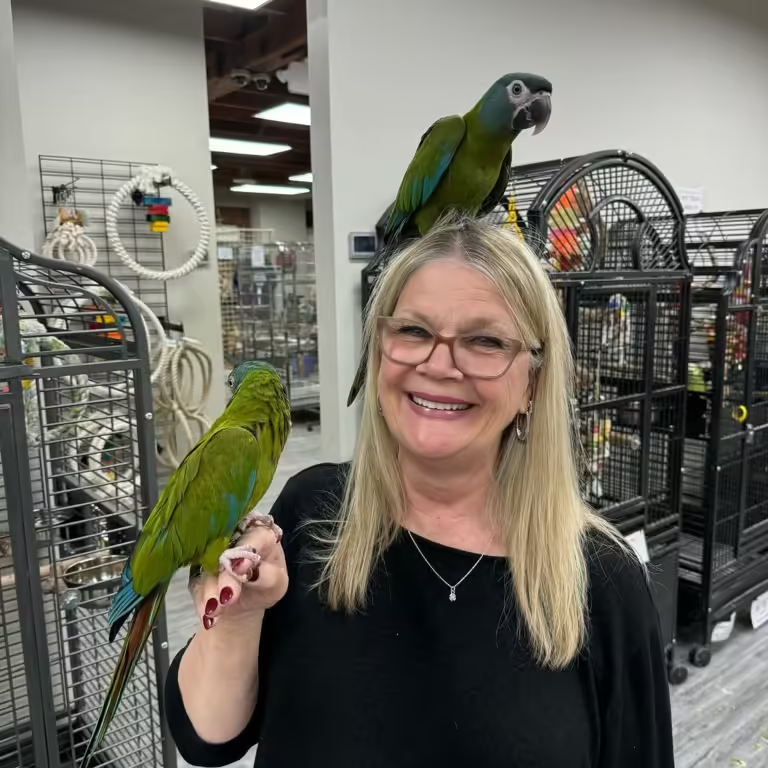
Find Parrots for Sale in Aurora IL: Top 5 Must-Visit Spots
Finding the perfect parrot in Aurora, IL, is an exciting adventure for bird lovers. This city offers various options for
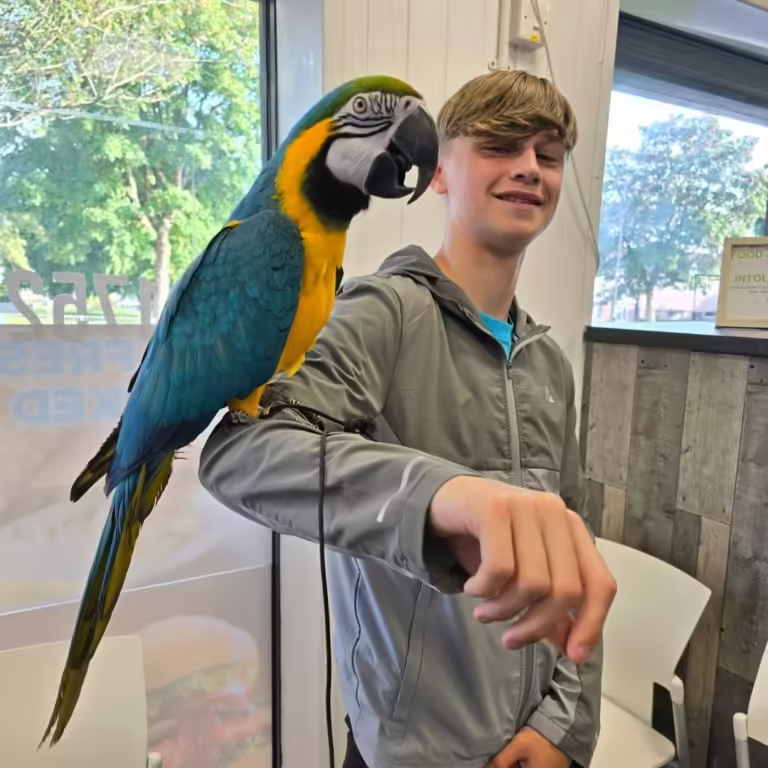
Find Parrots for Sale in Trenton NJ: Top 5 Must-See Spots!
Finding the perfect parrot can be a fun adventure. Trenton, NJ, offers plenty of options for bird lovers. From local
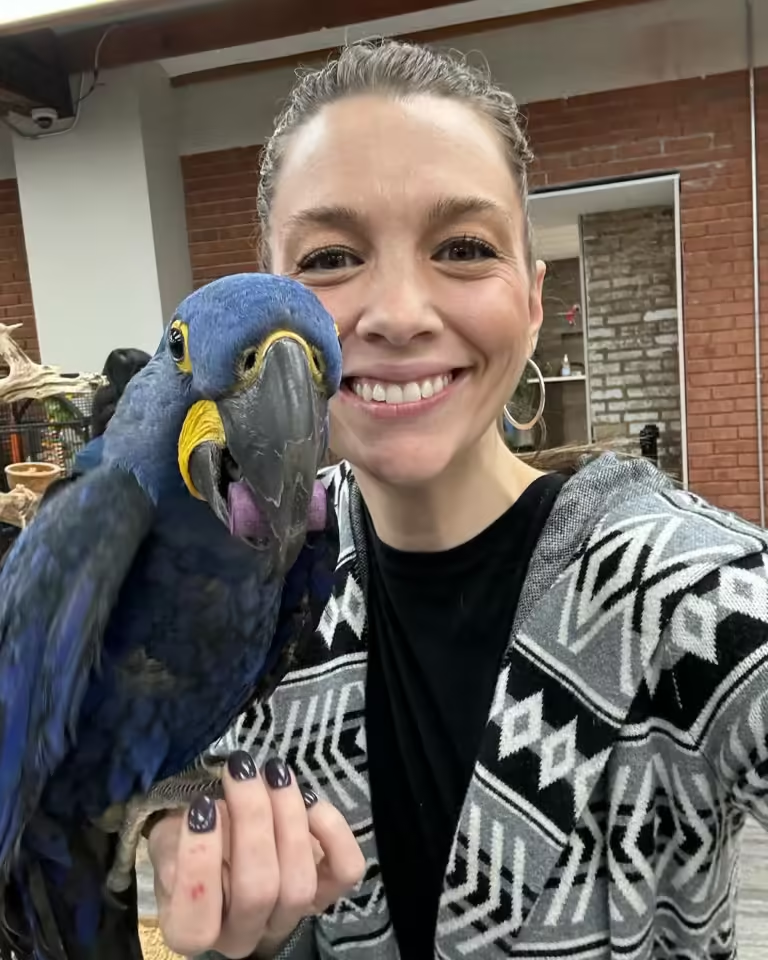
Find Parrots for Sale in Woodbridge Township NJ: Top 5 Must-See Spots!
Finding the perfect parrot can be a fun adventure. Woodbridge Township, NJ offers plenty of options for bird lovers. From

